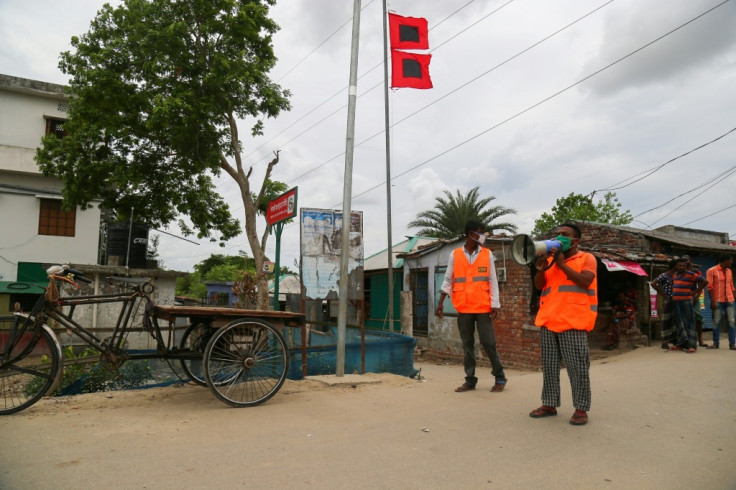Mass evacuations for major cyclone in South Asia
"Amphan" is expected to pack winds gusting up to 185 km per hour when it hits eastern India and Bangladesh on Wednesday afternoon or evening.
Millions of people were being moved to safety as one of the fiercest cyclones in years barrelled towards India and Bangladesh on Tuesday, but with evacuation plans complicated by coronavirus precautions.
"Amphan" is expected to pack winds gusting up to 185 kilometres (115 miles) per hour when it hits eastern India and Bangladesh on Wednesday afternoon or evening, and with a storm surge of several metres, forecasters said.
Bangladesh authorities fear it will be the most powerful since cyclone Sidr devastated the country in 2007, killing about 3,500 people -- mostly due to a deluge of sea water sweeping in.
Junior disaster management minister Enamur Rahman said Tuesday that they have already evacuated several thousand people from low-lying areas.
"We will evacuate up to 2.2 million and try to keep casualties at zero," Rahman told AFP.
To ensure social distancing in view of the coronavirus pandemic, the number of cyclone shelters has been doubled by using schools, with masks compulsory, Rahman said.
"We are also keeping separate isolation rooms in the shelters for any infected patients," he added.

Yamin Chowdhury, an official in Bangladesh's Barisal province, said the coast guard was helping to bring back thousands of people from remote islands.
Fishing boats have been ordered to return to shore and all ports and fish landing stations shut down.
"Coastal dwellers in Bangladesh are facing an impossible choice," Snigdha Chakraborty from aid group Catholic Relief Services (CRS) said in a statement.
"There is limited space in existing evacuation shelters and people who have been on COVID-19 lockdown might hesitate to leave their less-sturdy homes to go to a central -- and possibly crowded -- shelter."
She warned of "grim days ahead", with poor sanitation, limited access to safe water and health facilities.
The coronavirus lockdown had also cut off many people's income and eaten up their cash reserves, she added.

In India, West Bengal state official Manturam Pakhira said more than 200,000 people were being evacuated from coastal districts and the Sundarbans, a vast mangrove forest area.
"Authorities are also supplying masks and sanitisers and making arrangements so that they can maintain safe distance from each other," he said.
Arjun Manna, who works for the World Wide Fund for Nature (WWF) in the Sundarbans, told AFP that loud speakers were urging locals "to wear a mask and maintain social distancing in the shelters".
In Odisha state, relief commissioner Pradeep Kumar Jena told AFP that 20,000 people have been evacuated, with 600 disaster teams "pre-positioned" and contractors standing by with diggers and chainsaws.
"We will evacuate more people depending on the situation. No one will be allowed to stay in huts with thatched roofs in coastal areas," Jena said.
He too said that in order to ensure social distancing, additional temporary shelters have been identified, with the state ready to house 1.1 million people if needed.
"We have made arrangements for soap, water tanks for hand washing and face masks. We are also educating people about the need to cover their mouths," he said.
Indian Prime Minister Narendra Modi tweeted that he was praying for everyone's safety after chairing a virtual meeting on preparations Monday.
Bangladesh's low-lying coast, home to 30 million people, and India's east are regularly battered by cyclones that have claimed the lives of hundreds of thousands of people in recent decades.
In 1999, the eastern Indian state of Odisha was hit by a super-cyclone that left nearly 10,000 dead. In 1991, a typhoon, tornadoes and flooding killed 139,000 in Bangladesh.
While the storms' frequency and intensity have increased -- blamed partly on climate change -- deaths have fallen thanks to faster evacuations and more shelters.
Copyright AFP. All rights reserved.
This article is copyrighted by International Business Times, the business news leader





















